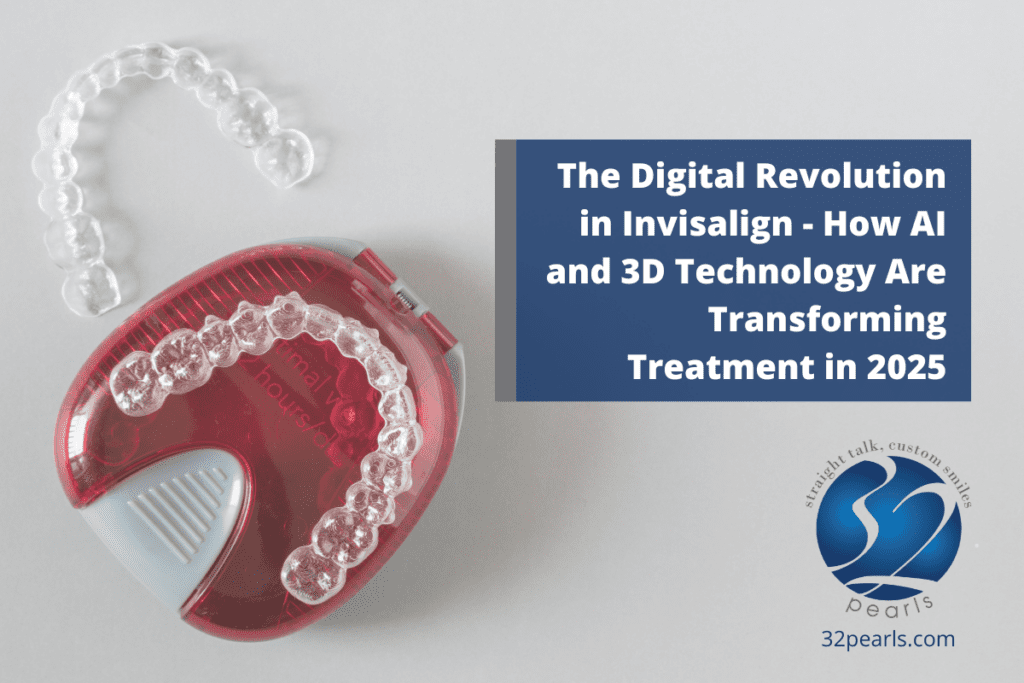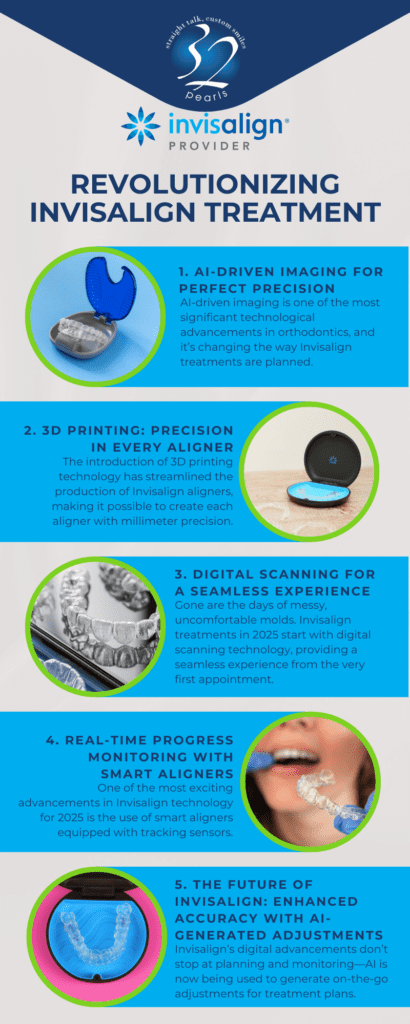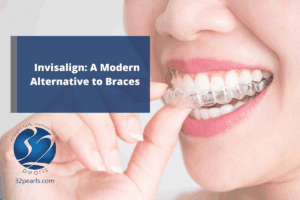
The Digital Revolution in Invisalign: How AI and 3D Technology Are Transforming Treatment in 2025
As digital technology reshapes industries across the board, Invisalign is embracing the future with cutting-edge advancements in AI and 3D technology. These developments are making Invisalign treatment more precise, effective, and tailored to individual needs. At 32 Pearls, we’re thrilled to integrate these digital innovations into our Invisalign services, allowing patients to enjoy a more customized and efficient path to a perfect smile. Here’s how AI and 3D technology are revolutionizing Invisalign treatment in 2025.

1. AI-Driven Imaging for Perfect Precision
AI-driven imaging is one of the most significant technological advancements in orthodontics, and it’s changing the way Invisalign treatments are planned. Traditional impressions have been replaced by digital scans that capture precise details of each patient’s dental structure. AI technology then analyzes these scans, helping orthodontists predict tooth movement with incredible accuracy.
How AI Enhances Invisalign Treatment
With AI, each aligner stage is more precisely planned, ensuring teeth move as intended with minimal adjustments. This accuracy reduces the need for refinements, helping patients complete their treatment on schedule. AI-driven imaging also creates a virtual preview of the final smile, allowing patients to see their anticipated results before treatment even begins.
Did You Know? Studies show that AI-assisted orthodontic treatment can reduce overall treatment time by up to 30%, making it an efficient choice for patients.
2. 3D Printing: Precision in Every Aligner
The introduction of 3D printing technology has streamlined the production of Invisalign aligners, making it possible to create each aligner with millimeter precision. 3D printing enables quick, accurate production of aligners tailored to each patient’s unique dental structure, ensuring that every aligner fits perfectly and works as intended.
Advantages of 3D Printing in Invisalign
3D-printed aligners provide consistent results, as each aligner is crafted to exact specifications. This precision minimizes discomfort and maximizes the effectiveness of the treatment. At 32 Pearls, our use of 3D-printed aligners allows us to deliver custom, high-quality results that are both accurate and efficient.
3. Digital Scanning for a Seamless Experience
Gone are the days of messy, uncomfortable molds. Invisalign treatments in 2025 start with digital scanning technology, providing a seamless experience from the very first appointment. Digital scanners capture a detailed 3D model of a patient’s teeth in seconds, offering a high-resolution view that aids in treatment planning.
Benefits of Digital Scanning
Digital scans are faster, more accurate, and more comfortable for patients than traditional molds. The high-resolution images allow orthodontists to create a detailed treatment plan without the need for multiple physical impressions. At 32 Pearls, we use advanced scanners to ensure that our patients start their Invisalign journey with ease and precision.
4. Real-Time Progress Monitoring with Smart Aligners
One of the most exciting advancements in Invisalign technology for 2025 is the use of smart aligners equipped with tracking sensors. These sensors monitor wear time and tooth movement, allowing orthodontists to access real-time data on each patient’s progress. This new technology ensures that patients stay on track and helps orthodontists make adjustments as needed to optimize results.
How Smart Aligners Benefit Patients
With smart aligners, patients receive notifications and reminders to wear their aligners consistently, helping them adhere to the treatment plan. Orthodontists can review data remotely, ensuring each stage is progressing as expected. This real-time feedback allows for a more proactive approach to treatment, ensuring the best possible results.
5. The Future of Invisalign: Enhanced Accuracy with AI-Generated Adjustments
Invisalign’s digital advancements don’t stop at planning and monitoring—AI is now being used to generate on-the-go adjustments for treatment plans. If teeth aren’t moving as expected, AI can suggest minor modifications to improve alignment. This continuous improvement process keeps the treatment on track, offering a highly adaptive approach.
AI-Generated Adjustments in 2025
AI-generated adjustments ensure that any deviations in tooth movement are quickly corrected, keeping patients on schedule. This adaptive technology means fewer refinements, shorter treatment times, and optimized results. At 32 Pearls, our adoption of AI-powered adjustments represents the next level of customization, providing each patient with a dynamic, responsive treatment experience.
Conclusion
The digital revolution in Invisalign is transforming orthodontics, making treatment more precise, efficient, and comfortable for patients of all ages. From AI-driven imaging and 3D printing to real-time progress monitoring and adaptive adjustments, these advancements are setting a new standard for Invisalign. At 32 Pearls, we’re proud to offer our patients access to these cutting-edge technologies, allowing them to achieve their best smile with confidence. Join us in experiencing the future of Invisalign and discover how digital innovation is creating a better, faster path to a perfect smile.
FAQs
How does AI improve Invisalign treatment accuracy?
AI analyzes digital scans to create highly precise aligner plans, ensuring each stage is accurate and minimizes the need for adjustments.
What are smart aligners, and how do they work?
Smart aligners are equipped with tracking sensors that monitor wear time and tooth movement, allowing orthodontists to access real-time data on treatment progress.
How does 3D printing benefit Invisalign patients?
3D printing creates aligners with exact specifications, providing a precise fit and consistent results, which enhances comfort and treatment effectiveness.





